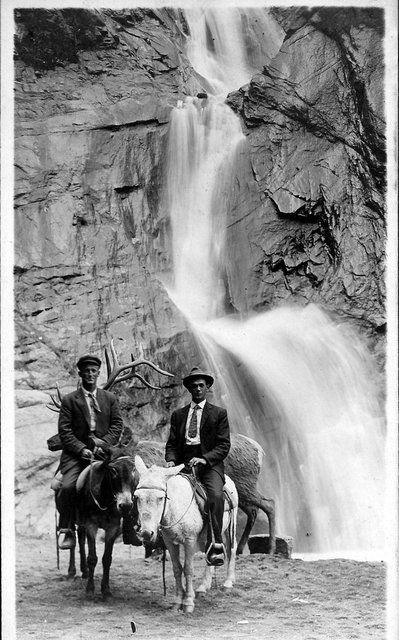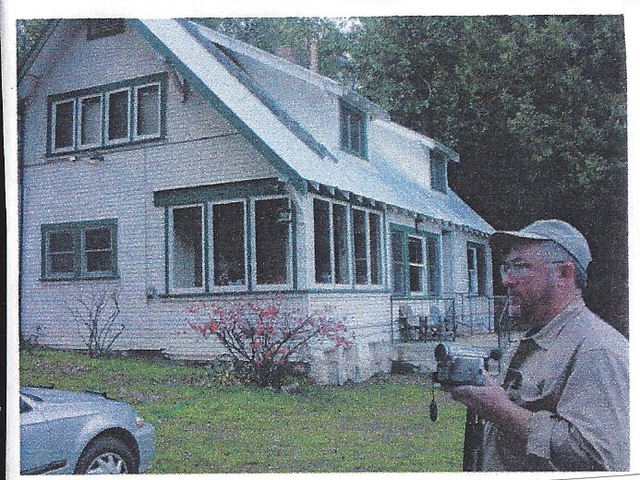Since Grandpa Davie's brother in law was a photographer who liked to make double exposures, it's entirely possible that this is actually a triple exposure exercise/experiment. Photographers did that sort of thing before computer manipulation to make photographs of seemingly impossible scenes.
Some info on the Sherman Pass Road. Doesn't look like it went over the crest at the time the photo was supposed to have been taken. Without more context for the water fall there is no way to know where in California it is or even if it's in California at all.
When the state sign route system was created in 1934, Sign Route 190 was assigned to the portion of Route 127 west of Death Valley Junction, while the remainder to Baker became part of Sign Route 127.[15] However, the highway was not continuous, with the roadway from Tipton (which had been built by Tulare County[16]) ending at Quaking Aspen (east of Camp Nelson) and that from Death Valley ending southwest of Lone Pine.[17] In 1923, Tulare County businessmen had begun to push for a new trans-Sierra highway connecting Porterville with Lone Pine,[18] but were set back by a lack of state aid, as the road was not a state highway.[19] The first piece, which would turn out to be the only one built, opened in early July 1931 to Quaking Aspen (and became a state highway in 1933).[20] Grading of the 15-mile (24 km) Western Divide Highway, a county road that was supposed to continue south to State Route 155 at Greenhorn Summit,[21] was completed from Quaking Aspen south to near Johnsondale in July 1962.[22] A new road from Johnsondale across Sherman Pass, maintained by the U.S. Forest Service and Tulare and Inyo Counties (the latter as County Route J41), was completed in 1976, allowing traffic on the western segment of SR 190 to reach US 395, though via a longer route than the proposed SR 190.[23]



